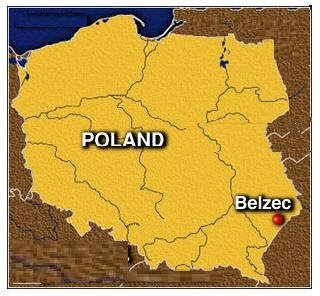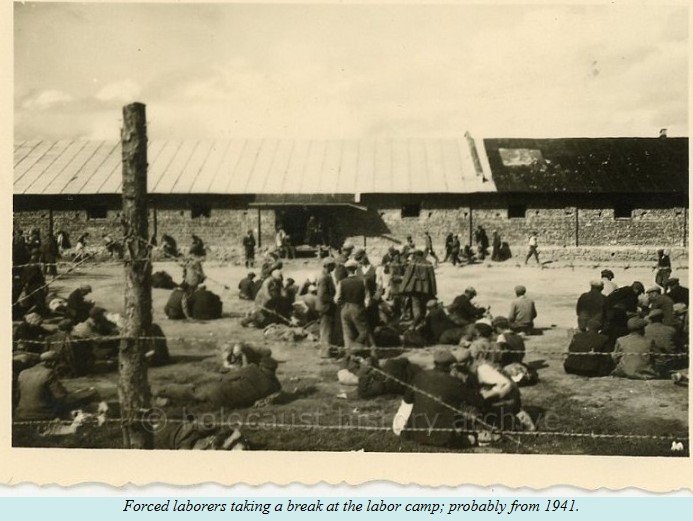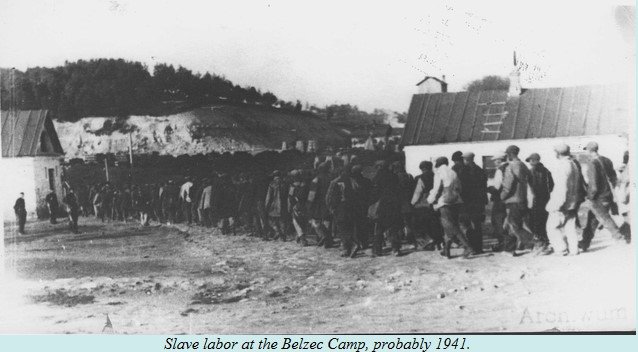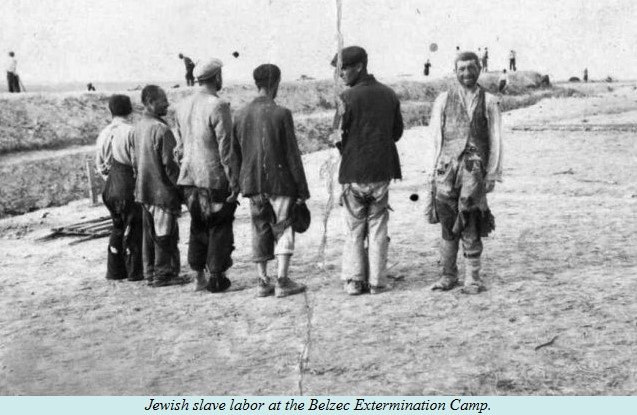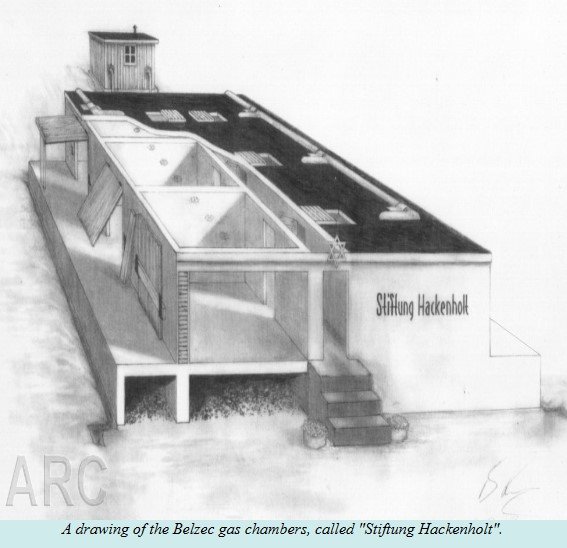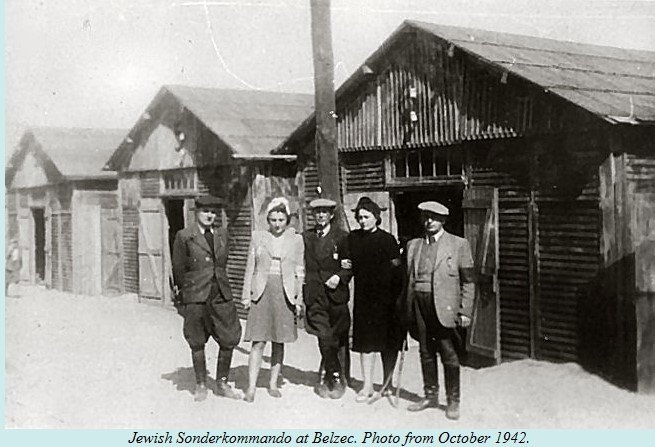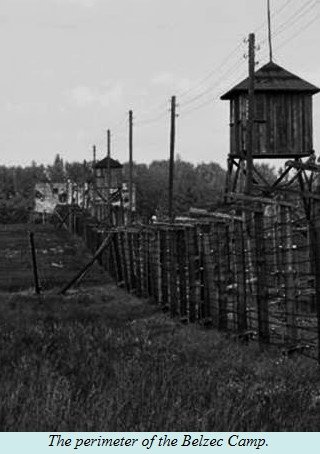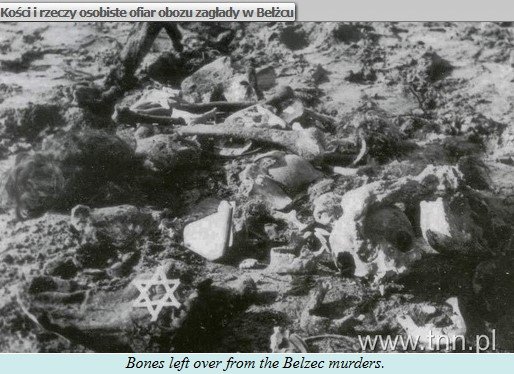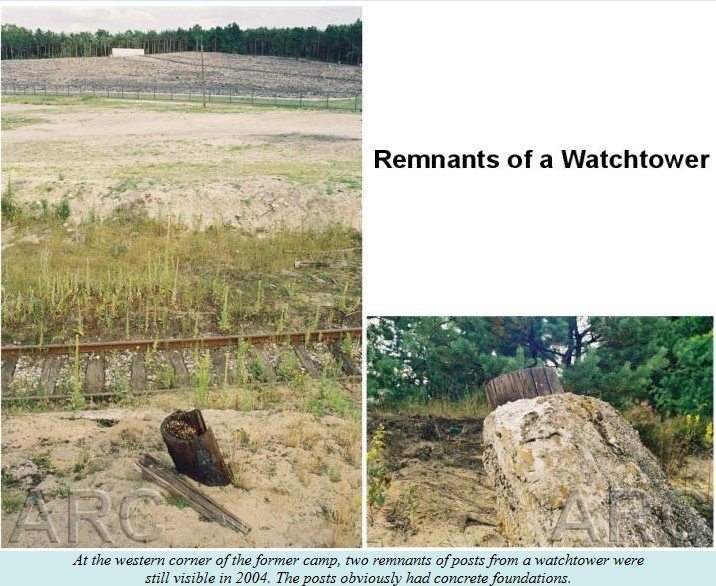The Bełżec Remembrance Project
The Death Camp Bełżec (pronounced Bell-zjitz) was one of the key centers for the extermination of European Jewry.
Phase I of Belzec was a forced labor operation that began in May 1940. Jews were transferred to Belzec for slave labor as
follows: 474 Jews from Zamosc in summer 1940; 26 Jews from Zamosc in August 1940; unknown number of Jews from Gorzkow
in 1940; 600 Jews from Hrubieszow in August 1940; 300 Jews from Szczebrzeszyn in August 1940; and 10,000 Jews
from the Lublin, Radom and Warsaw districts between May and August 1940. The work camps in Belzec and nearby towns
were abandoned in October 1940. The system of labor camps at Belzec was the largest slave labor operation in the
Generalgouvernement in 1940. On July 13, 1940, the Lublin Judenrat had been forced to fund labor camps in Tyszowce
and Belzec. Froim Farber, an escapee from Belzec labor camp, describes it before it was a death camp. Nazis Hermann Dolp,
Franz Bartetzko and Reinhold Feix were the main overseers at the Belzec camp in 1940.
A series of ghettos and labor camps were established which the Germans used in conjunction with Belzec:
- Belzec-Dwor Labor Camp
- Belzec-Mlyn Labor Camp
- Belzec-Parowozownia Labor Camp
- Cieszanow Labor Camp
- Izbica Transit Ghetto
- Lipsko Labor Camp
- Plazow Labor Camp
- Tomaszow Lubelski Ghetto
Phase II of Belzec was when it became the first camp with the mission of carrying out Operation Reinhard -- the German call
to exterminate all Jews. Its 3 gas chambers began operating on March 17, 1942. The number of victims of the camp is
unclear, but is likely to be significantly higher than 500,000 Jews.
Belzec Death Camp was small, with a circumference of around 1,220 yards. It was divided into two sections, each with a barbed
wire fence surrounding it. There were guard towers around the main perimeter. The first camp was split into two parts. The smaller
area contained the administration buildings and the Ukrainian barracks. The larger part included the spur line, which carried rail
trucks into the camp, as well as an area where the Jewish deportees were sorted into groups of men or women and children. Also in
the large section were the barracks where victims were forced to undress and were shaven, storerooms for their clothing and personal
objects, and huts for the Jewish workers who were employed by the S.S. to carry out the duties associated with the murders.
The second camp housed the gas chambers and burial pits. It was reached by a long, narrow passageway with barbed wire
fencing on either side, referred to as "the tube". The extermination site was screened off from the rest of the camp by leafy branches
intertwined with the barbed wire. A disinformation campaign was critical to the Nazi's successes at Belzec. After a transport of
victims would arrive, they were divided into smaller convoys of prisoners. The victims were then rapidly disembarked onto the platform,
where they were assured that they had arrived at a transit camp. They were told that before being assigned to labor duties elsewhere,
they would be disinfected and showered. Men were separated from women and children and marched off to large huts where they
undressed. Women had their hair shaven off. All prisoners were then pushed to "the tube" and into the gas chambers, disguised as showers.
Carbon monoxide gas was piped in from a diesel engine mounted outside. Once the gas chambers were filled and the doors shut, the killing process took up to 30 minutes. Teams of Jewish laborers who had been selected from earlier transports then removed the corpses and dragged them to burial pits. Other Jewish workers removed gold teeth from the bodies. At the main platform, teams of Jewish slave laborers cleaned up the trucks and tidied the platform. In the undressing rooms, additional Jewish slave labor units were forced to sort clothing, luggage, and personal objects. Jewish slave labor commando units under the supervision of an S.S. member, principally Rudolf Kamm or Heinrich Unverhau, collected the baggage of the victims and brought them to the former locomotive shed. This building is where the stolen property was sorted.
Belzec operated beginning in early 1942 and was dismantled in May, 1943, with the last victims of the camp being sent to Sobibor Death Camp. During the early months of 1943, the corpses of the murdered victims were disinterred and burned in open air pits. The
camp was then closed. The area where the burnings took place was plowed over and turned into a farm. The victims included Jews and
Roma. Around 300,000 Jews from the Lublin district of Poland were deported to Belzec. S.S. Lt. Kurt Gerstein, who worked in the
S.S. medical service, witnessed and later reported the gassing of 3,000 Jews on a transport from Lwow to Belzec on August 17, 1942, together with Rolf Gunther and Wilhelm Pfannenstiel. The next day he went to Treblinka, where he saw big piles of clothing.
A list of the transports to Belzec Death Camp can be found here.
A small portion of the 500,000+ victims of Belzec are remembered here. Today a remembrance museum exists at Belzec. A list of the Nazis involved in the camp is here. A map of how the Belzec Death Camp appeared is available here or here.



LINKS
- Archaeological Investigations of Belzec Pre-2007
- Belzec Death Camp Map
- Belzec Death Camp Perpetrators
- Chaim Hirszman Testimony
- Facebook group: Belzec and Sobibor Memorial
- Facts of Belzec Death Camp
- Kurt Gerstein Testimony
- Maps of Deportations to Belzec from Martin Gilbert
- Memorializing the Victims
- Reconstruction of Belzec
- Rudolf Reder Testimony
- Train jumpers from Belzec Transports
- Wehrmacht Officer Wilhelm Cornides Eyewitness Testimony
- Wilhelm Pfannenstiel Eyewitness Testimony
- What Happened at Belzec
ORAL HISTORY TESTIMONIES
- Karolina Banas (video testimony)
- Wladislaw Baczmaga (video testimony)
- Aniela Bober (video testimony)
- Stanislaw Bucior (video testimony)
- Bronislaw Czachor (video testimony)
- Aron Fellenbaum
- Gary Flumenbaum
- Gizela Gdula (video testimony)
- Jozef Honig (video testimony)
- Tadeusz Jarosz (video testimony)
- Stefan Kirsz (video testimony)
- Gerson Lebenbaum
- The Other Side of Faith (video testimonies)
- Zofia Putkowska (video testimony)
- Broislaw and Rozalia Ragan (video testimonies)
- Bronislaw Sikora (video testimony)
- Janina Spasowicz (video testimony)
- Franciszek Stadnicki (video testimony)
- Jozef Swietojanski (video testimony)

